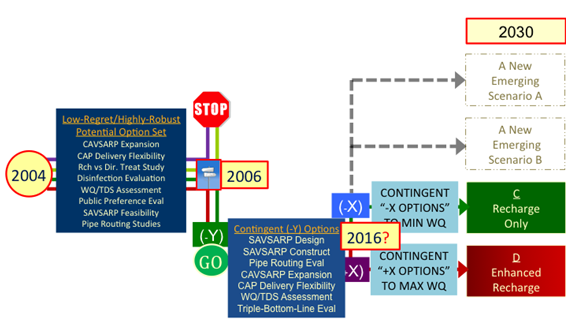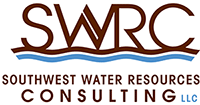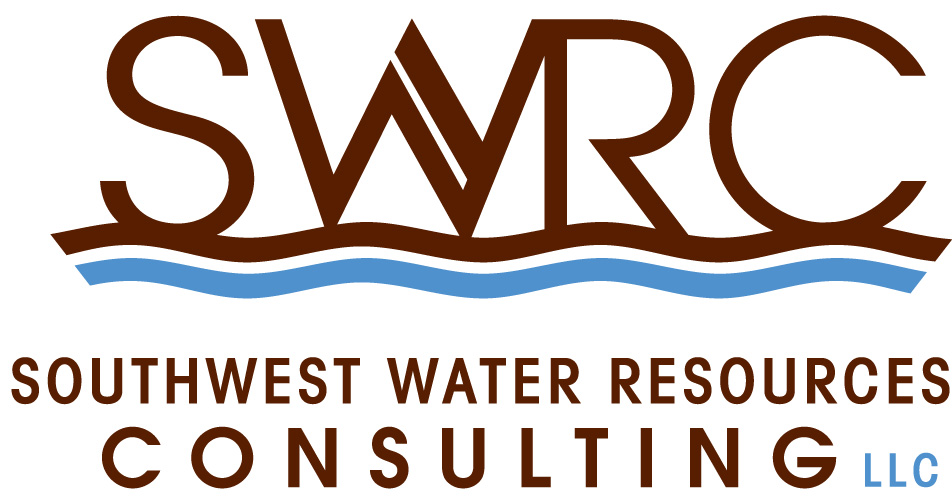Case Study: How to Utilize a Vital but Controversial Renewable Supply
Time frame: 2003 – 2016 | Organization: Tucson Water
Background/Context: In the early 1990s, Tucson Water faced system corrosion problems when it shifted from locally pumped groundwater to imported Colorado River water as its primary municipal water source. The latter was slated to become the long-term water supply for the Greater Tucson Region. Colorado River water was being conveyed over 300 miles to the Tucson area via the Central Arizona Project (CAP) Aqueduct and came to be known as CAP water. The high salinity of CAP water and the City’s new treatment plant were blamed for “red water” flowing out of many taps and a large number of residential plumbing failures. Many residents became angry and the local news media seized on the issue. The ensuing public backlash contributed to a “perfect storm” which led to an indefinite suspension of CAP water deliveries, a non-sustainable return to aquifer mining, and a loss of public trust.
The Problem: Most leaders in the region knew that transitioning from local groundwater to CAP water was the only sustainable path forward. But it was unclear how to win back the public trust in a politically viable way and how long it might take. By the late 1990s, Tucson Water was able to use a portion of its annual CAP water allocation by blending it with local groundwater via aquifer recharge but it was unclear what should be done with the balance. The Strategic Issue before Tucson Water was to find a way to bring into full use its annual CAP water allocation as soon as possible to meet both current and future demand in a sustainable way.
Working Toward A Solution: Tucson Water staff used the scenario planning process in 2003 to update the Utility’s Integrated Resources Plan. Through facilitated discussion, Utility managers determined that the most critical planning uncertainties related to two fundamental questions. First, is Tucson’s public willing to pay extra for discretionary water-quality improvements to CAP water to make it more acceptable? And second, will the public ever accept use of Tucson Water’s new treatment plant for direct delivery of CAP water? A scenario matrix was generated resulting in four hypothetical scenario futures characterizing possible CAP water use outcomes in the year 2030. Each of the scenarios embodied a unique combination of possible “Yes/No” outcomes related to the two identified uncertainties.
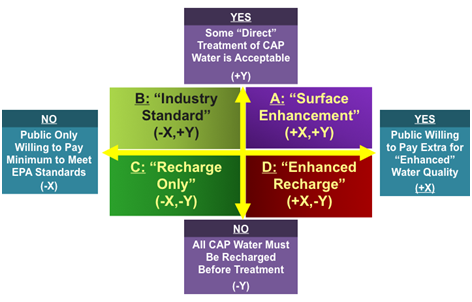
These scenario futures were used to define the range of future possibility in 2030—the longer-term planning horizon that would provide the planning context for making near and mid-term decisions. The approach provided staff with the means to make insightful decisions early in time that could take into account potential, far-reaching consequences later in time.
Staff reviewed the needs, challenges, and opportunities associated with each scenario future and identified potential actionable options to address them. Action sets were prepositioned on a strategic flow chart outlining multiple, credible ways forward to fully use the CAP supply. The result was the development of a Strategic Futures Action Plan that became a vehicle to build political and public consensus in the community.
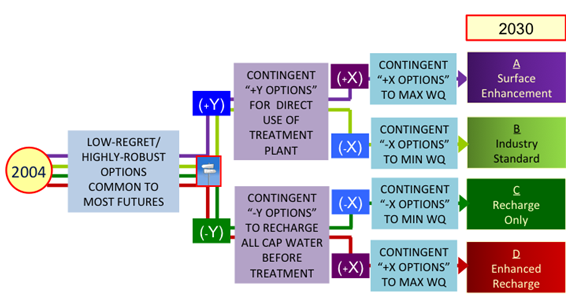
In 2006, Scenarios A and B faded from consideration after a political decision was made at the first junction to designate “-Y” as the chosen way forward. As of 2016, Scenario C appears to be the most likely outcome within the 2030 timeframe but Scenario D still remains a viable possibility. At the same time, new scenarios are emerging which may also include using these same recharge facilities to indirectly reuse the City’s effluent for potable supply.
